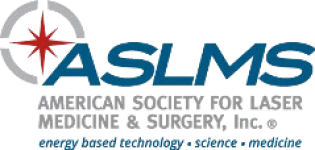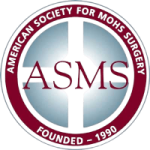Alopecia areata is an autoimmune disorder characterized by the sudden and often unpredictable loss of hair from the scalp or other parts of the body. The condition occurs when the immune system mistakenly attacks hair follicles, leading to hair loss that can be patchy, affecting small areas, or more widespread in severe cases. While the exact cause is unknown, genetic and environmental factors are believed to play a role. Alopecia areata can affect people of all ages and genders, and while it is not life-threatening, it can have significant psychological and emotional impacts. Treatment options vary, focusing on managing symptoms and promoting hair regrowth, though there is no cure.
Alopecia Areata at a Glance
• A Nonscarring hair disorder, with quick onset
• Thought to be an autoimmune disease with a possible heredity component.
• Occurs in both genders equally and can affect every age group, although incidence at younger age is higher.
• Most common form of hair loss in children.
• Clinically presents with clearly demarcated round or oval bald spots with a smooth surface on the scalp or other parts of the body.
• Characteristic hallmarks of alopecia areata are “black dots” resulting from hair that breaks before it reaches the skin surface.
• Exclamation point hairs, with a blunt distal end and taper proximally, appear when the broken hairs (black dots) are pushed out of the follicle.
• Nail changes include pitting or sandpaper nails.
• Hair loss of their entire scalp hair (alopecia areata totalis), 1% develop alopecia areata universalis (loss of total body hair).
• Usually without associated disorders, but can coexist with other autoimmune disorders such as Hashimoto thyroiditis or vitiligo.
• Many patients report the experience of major emotional stress prior to the onset of alopecia.
Alopecia Management
Alopecia areata shows a high rate of spontaneous remission, especially in those patients with a short history and limited scalp involvement. On the other hand, in alopecia totalis and universalis, treatments have a high failure rate. After the discussion of possible risks and benefits of all options, “no treatment” may be a legitimate option for some patients.
Topical Corticosteroids
Superpotent (class I) and potent (class II) topical corticosteroids are widely used to treat alopecia areata. Evidence of efficacy has been proven for class I corticosteroids when applied under occlusion and for class II corticosteroids when used in combination with minoxidil.
- Intralesional Corticosteroids – Intralesional corticosteroid (triamcinolone acetonide or triamcinolone hexacetonide) injection is first line therapy for adult patients with less than 50% scalp involvement. Triamcinolone acetonide is used at concentrations from 2.5–10 mg/mL. Treatments are repeated every 4 to 6 weeks.
- Systemic Corticosteroids – Dosages vary from initial 20–40 mg prednisone daily tapered down to 5 mg daily in a few weeks or different pulse therapies regiments with short-term high doses of oral prednisolone (100–300 mg) or i.v. methylprednisolone (250 mg).
- Topical Minoxidil- 5% solution.
- Anthralin – Anthralin is an irritant that may have a nonspecific immunomodulating effect. Anthralin is used as a 0.2%–1.0% cream or ointment. It is usually applied daily to the affected scalp areas and left on for 20–30 minutes for the first 2 week, and then 45 minutes daily for 2 week, up to a maximum of 1 hour daily. Some patient may tolerate overnight therapy. When therapy is effective, new hair growth can usually be seen after 2–3 months of treatment. Because of its good safety profile, anthralin can be used safely in affected children.
- Anthralin is not suitable for the treatment of eyebrows and beard area. Patients should be cautious not to get anthralin in the eyes and to protect the treated skin areas from UV irradiation.
- Brown discoloration of the treated skin and brown staining of clothes and linen may occur.
- The patient should be advised to rinse off the anthralin with cool or luke-warm water, since hot water increases the likelihood of brown stains of tiles and bathtub.
Topical Immunotherapy
Topical immunotherapy seems to be the most effective therapeutic option with the best safety profile in the treatment of chronic severe alopecia areata. The desired effect of the treatment is the creation of a contact dermatitis.
- Diphenylcyclopropenone (DPCP) and squaric acid dibutyl ester (SADBE) are the most commonly used contact sensitizers.
- Applying a small amount of a 2% solution to a small scalp or other area (often the arm) one week prior to treatment initiation sensitizes the patient. The DPCP or SADBE solution is then applied weekly to the scalp, starting at a concentration of 0.0001%. The scalp should not be washed for 48h post treatment and should be protected from UV radiation. Every week the concentration is carefully increased until the patient develops a mild erythema and mild itching. The treatment is continued with this concentration; the highest concentration used is 2%.
- Side effects include lymphadenopathy in 100% of patients, severe contact eczema, discoloration of the skin including vitiliginous patches and hyperpigmentation on the scalp and other arts of the body. Greater caution is indicated in patients with atopic dermatitis and dark skin types.
- Cyclosporine- 4–6 mg/kg/day
- Camouflage, Wigs, and Hairpieces




